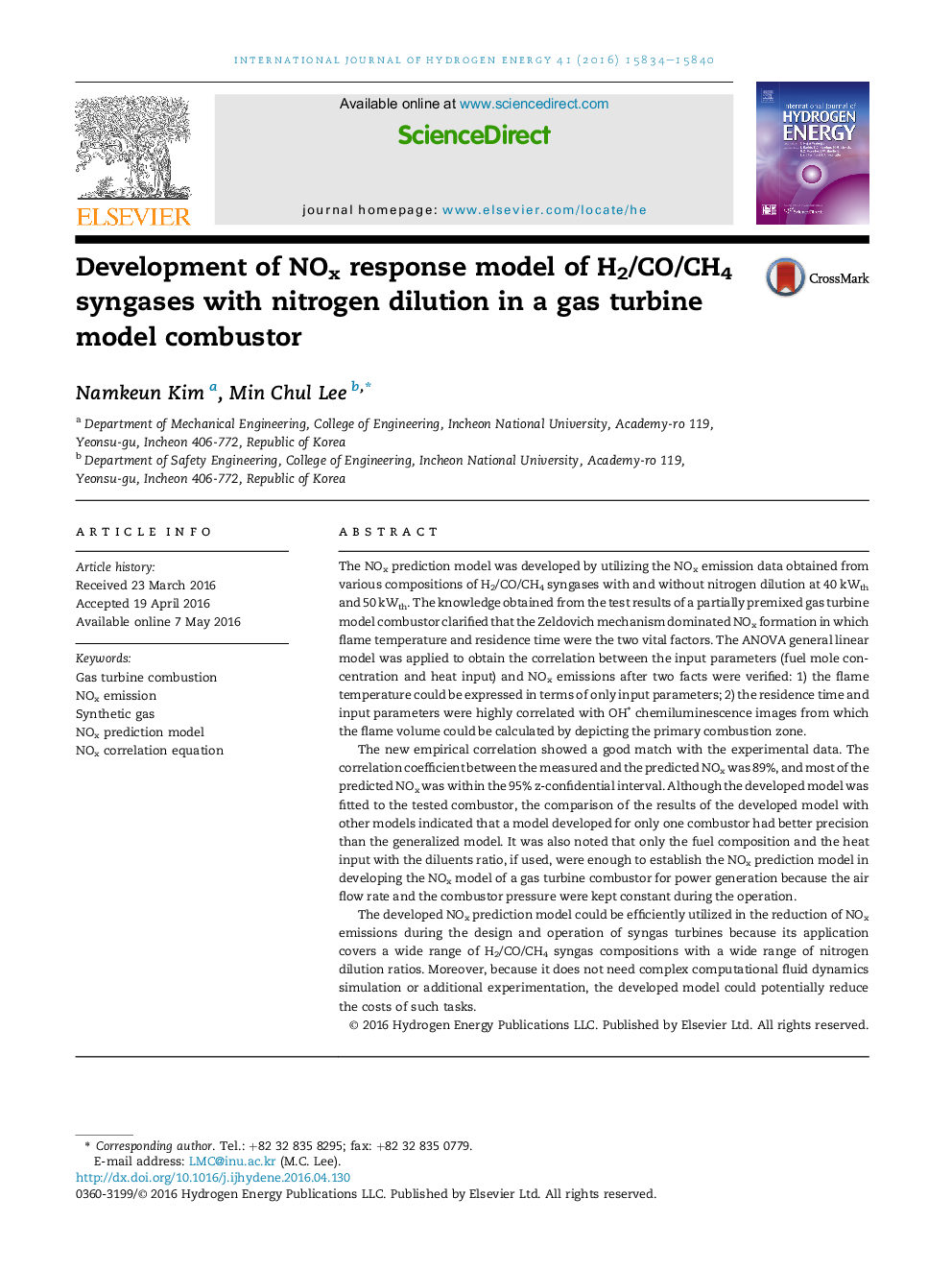| کد مقاله | کد نشریه | سال انتشار | مقاله انگلیسی | نسخه تمام متن |
|---|---|---|---|---|
| 1270311 | 1497390 | 2016 | 7 صفحه PDF | دانلود رایگان |

• NOx prediction model was developed using syngas combustion data with N2 dilution.
• ANOVA general linear model was applied to obtain NOx correlation.
• Only fuel mole concentration and heat input were used as input for NOx prediction.
• Prediction accuracy was proved by achieving a correlation coefficient of 89%.
• Most of the predicted NOx was within a z-confidential interval of 95%.
The NOx prediction model was developed by utilizing the NOx emission data obtained from various compositions of H2/CO/CH4 syngases with and without nitrogen dilution at 40 kWth and 50 kWth. The knowledge obtained from the test results of a partially premixed gas turbine model combustor clarified that the Zeldovich mechanism dominated NOx formation in which flame temperature and residence time were the two vital factors. The ANOVA general linear model was applied to obtain the correlation between the input parameters (fuel mole concentration and heat input) and NOx emissions after two facts were verified: 1) the flame temperature could be expressed in terms of only input parameters; 2) the residence time and input parameters were highly correlated with OH∗ chemiluminescence images from which the flame volume could be calculated by depicting the primary combustion zone.The new empirical correlation showed a good match with the experimental data. The correlation coefficient between the measured and the predicted NOx was 89%, and most of the predicted NOx was within the 95% z-confidential interval. Although the developed model was fitted to the tested combustor, the comparison of the results of the developed model with other models indicated that a model developed for only one combustor had better precision than the generalized model. It was also noted that only the fuel composition and the heat input with the diluents ratio, if used, were enough to establish the NOx prediction model in developing the NOx model of a gas turbine combustor for power generation because the air flow rate and the combustor pressure were kept constant during the operation.The developed NOx prediction model could be efficiently utilized in the reduction of NOx emissions during the design and operation of syngas turbines because its application covers a wide range of H2/CO/CH4 syngas compositions with a wide range of nitrogen dilution ratios. Moreover, because it does not need complex computational fluid dynamics simulation or additional experimentation, the developed model could potentially reduce the costs of such tasks.
Journal: International Journal of Hydrogen Energy - Volume 41, Issue 35, 21 September 2016, Pages 15834–15840